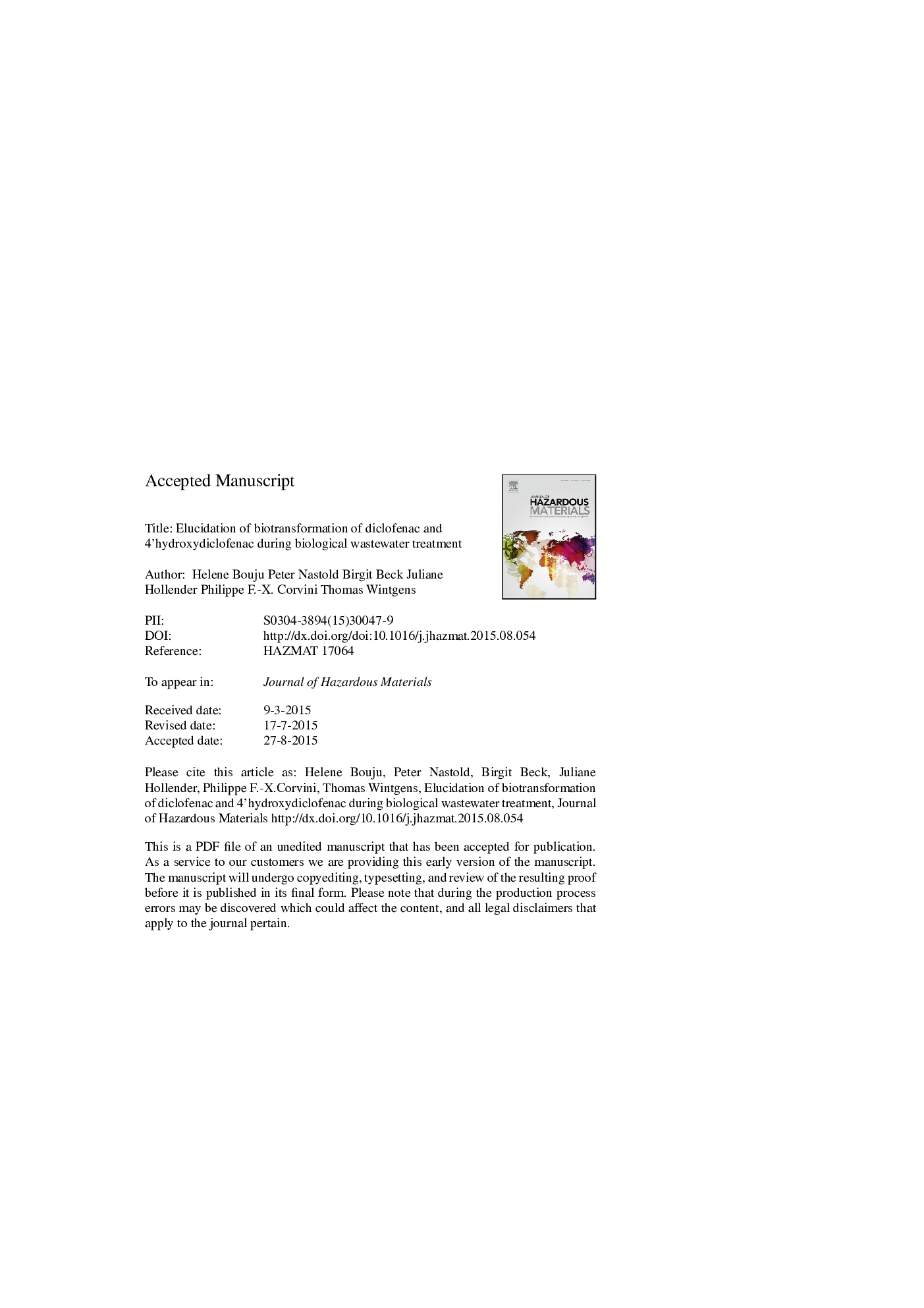| Article ID | Journal | Published Year | Pages | File Type |
|---|---|---|---|---|
| 575815 | Journal of Hazardous Materials | 2016 | 23 Pages |
Abstract
This study aimed at gaining knowledge on the degradation pathway during biological treatment of wastewater of diclofenac and 4â²-hydroxydiclofenac, its main human metabolite. For that purpose, an aerobic MBR was acclimatised to diclofenac, and the MBR biomass subsequently incubated with 14C-diclofenac or 14C-4â²hydroxydiclofenac over 25 days. It was demonstrated that diclofenac degradation was much slower and limited than that of 4â²-hydroxydiclofenac. Indeed, after 18 days of batch incubation, diclofenac was removed up to 40%, this rate remained stable till the end of the experiment, while 4â²-hydroxydiclofenac was completely degraded within nine days. The analyses of supernatant samples have shown that diclofenac degradation led to four transformation products, more polar than the parent compound, one of them being 4â²-hydroxydiclofenac. The degradation of 4â²-hydroxydiclofenac led to the formation of the same metabolites than those detected during diclofenac degradation. With these results, the hydroxylation of diclofenac to 4â²-hydroxydiclofenac was identified as one major bottleneck in diclofenac degradation during biological treatment of wastewater.
Keywords
LC-TOF-MSHRMSLOECDADNSAIDsRTSPEAGCHRTcpsLSCMBRWWTPSolid phase extractionMembrane bioreactordiode array detectionWastewater treatment plantWastewater treatmentNon-steroidal anti-inflammatory drugsDiclofenacSolids retention timehydraulic retention timeBiotransformationcounts per secondHigh resolution mass spectrometryTransformation productsArbitrary Unitlowest observed effect concentrationautomatic gain control
Related Topics
Physical Sciences and Engineering
Chemical Engineering
Chemical Health and Safety
Authors
Helene Bouju, Peter Nastold, Birgit Beck, Juliane Hollender, Philippe F.-X. Corvini, Thomas Wintgens,
